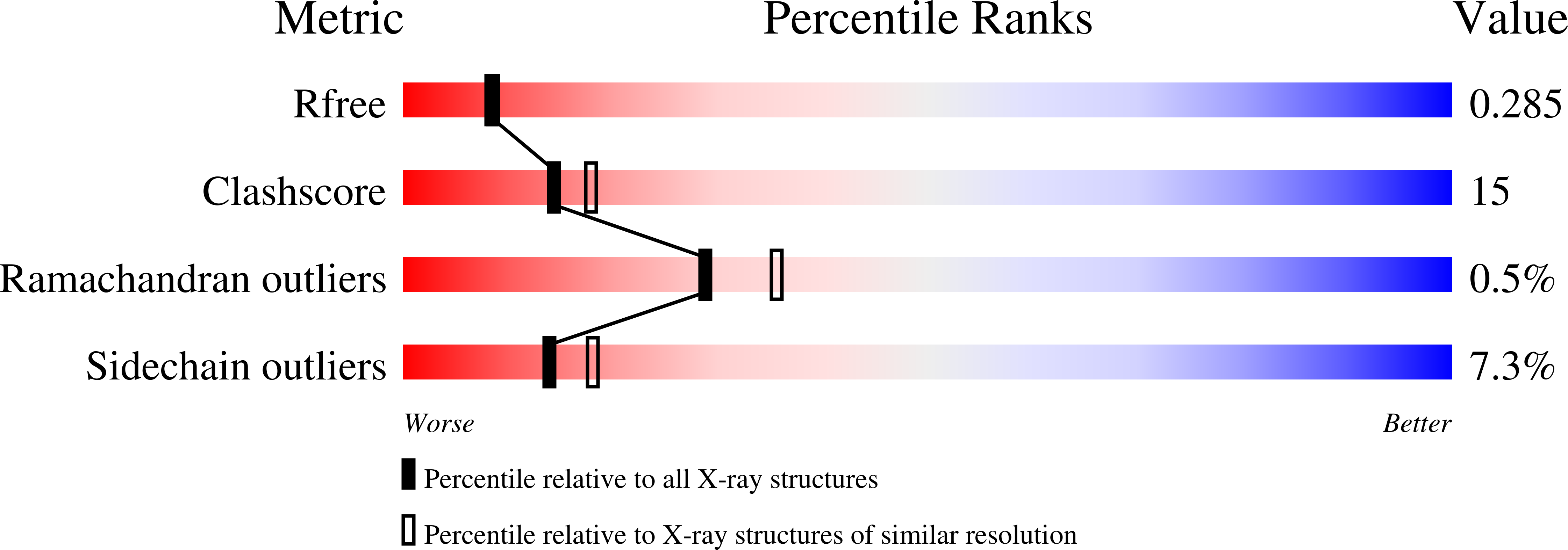Motion of the DNA-binding domain with respect to the core of the diphtheria toxin repressor (DtxR) revealed in the crystal structures of apo- and holo-DtxR.
Pohl, E., Holmes, R.K., Hol, W.G.(1998) J Biol Chem 273: 22420-22427
- PubMed: 9712865
- DOI: https://doi.org/10.1074/jbc.273.35.22420
- Primary Citation of Related Structures:
1BI0, 1BI1, 1BI2, 1BI3 - PubMed Abstract:
The diphtheria toxin repressor (DtxR) from Corynebacterium diphtheriae is a divalent metal-activated repressor of chromosomal genes that encode proteins responsible for siderophore-mediated iron uptake and also of the gene of certain corynebacteriophages that encodes diphtheria toxin. DtxR consists of two 25.3-kDa three-domain subunits and is a member of a family of related repressor proteins in several Gram-positive bacterial species, some of which are important human pathogens. In this paper, we report on the first high resolution crystal structures of apo-DtxR in two related space groups. In addition, crystal structures of Zn-DtxR were determined in the same two space groups. The resolutions of the structures range from 2.2 to 2.4 A. The four refined models of the apo- and the holo-repressor exhibit quite similar metal binding centers, which do, however, show higher thermal motion in the apo-structures. All four structures reported differ from each other in one important aspect. The N-terminal DNA-binding domain and the last 20 residues of the dimerization domain of each subunit move significantly with respect to the core of the DtxR dimer, which consists of residues 74-120 from both subunits. These results provide the first indication of a conformational change that may occur upon binding of the holo-repressor to DNA.
Organizational Affiliation:
Department of Biological Structure, University of Washington, Seattle, Washington 98195-7742, USA.



















